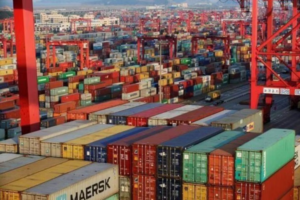Expert insights by Sunil Arora, CEO, One World One Network, highlight how air cargo demonstrates remarkable resilience through innovation, diversification, and strong logistics networks amid global trade uncertainties.

Resilience drives air cargo’s global strength
In 2025, global trade is navigating a complex landscape shaped by trade wars, tariffs, and geopolitical uncertainties. Yet, the air cargo sector continues to demonstrate remarkable resilience. Its adaptability is reflected in sustained growth, technological innovation, and strategic realignments that ensure the seamless movement of goods across the globe.
Growth amid challenges
Even amidst turbulence, the air cargo industry has exhibited consistent growth. The International Air Transport Association (IATA) reports that global air cargo demand increased by 4.1% year-on-year in August 2025, marking the sixth consecutive month of growth. This momentum is partly driven by shippers opting for air transport over sea routes to mitigate risks associated with tariffs and supply chain disruptions.
Tech-driven efficiency
The sector’s resilience is underpinned by rapid adoption of digital solutions and operational innovations. Advanced technologies such as Artificial Intelligence (AI), Internet of Things (IoT) devices, and blockchain, are improving real-time visibility, streamlining operations, and enabling smarter decision-making. These tools empower stakeholders to navigate complex logistics landscapes with greater agility, reliability, and precision.
Strategic market shifts
Geopolitical tensions and evolving trade policies have prompted air cargo providers to realign strategies and diversify markets. For example, Asia–Middle East air cargo volumes surged 13% year-on-year in 2024, significantly outpacing the global growth rate of 3.5%. This trend highlights a strategic pivot toward alternative trade routes and emerging markets, reinforcing the sector’s stability amid global uncertainty.
Economy and market outlook
According to the International Monetary Fund (IMF), global economic growth is projected at 2.6% in 2025, slightly lower than 3.6% in the previous year, impacted by trade tensions and inflationary pressures. Despite these challenges, the air cargo industry remains a critical pillar of the global economy, with the market expected to reach USD 250 billion in 2025 and grow at a compound annual growth rate (CAGR) of 5.3% through 2035.
Strength of logistics networks
In today’s volatile trade environment, a robust global logistics network is more critical than ever. Such a network ensures that cargo can be rerouted quickly in response to geopolitical disruptions, trade restrictions, or natural calamities, maintaining continuity and minimizing delays. By connecting multiple hubs, partners, and transport modes worldwide, logistics networks provide flexibility, redundancy, and real-time visibility, allowing businesses to adapt seamlessly to changing market conditions. Essentially, a strong global logistics network transforms challenges into opportunities, ensuring that goods continue to flow efficiently, even in uncertain times.
A lifeline for trade
In today’s uncertain environment, air cargo is more than transportation; it is a lifeline connecting businesses, markets, and people worldwide. Through innovation, strategic foresight, and operational excellence, the sector continues to rise to challenges, ensuring the reliable movement of goods across borders. As global trade evolves, the air cargo industry’s resilience and adaptability will remain central to its enduring role in the world economy.











